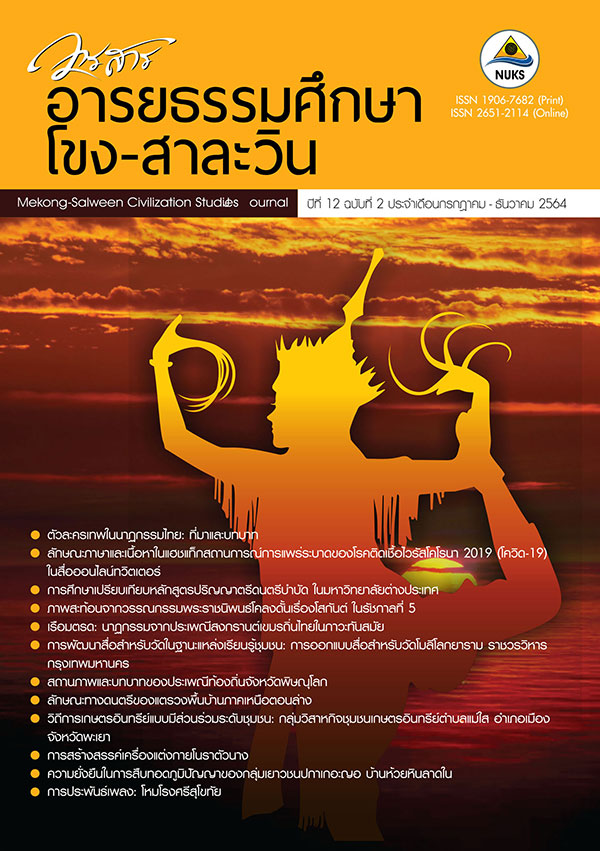Media Development for a Temple performing as Community Learning Center: Media Design for Wat Molilokkayaram Rajaworawihan, Bangkok การพัฒนาสื่อสำหรับวัดในฐานะแหล่งเรียนรู้ชุมชน: การออกแบบสื่อสำหรับวัดโมลีโลกยาราม ราชวรวิหาร กรุงเทพมหานคร
Main Article Content
Abstract
The purposes of this research were 1) to study the history and role of being a learning center of the community of Wat Molilokkayaram Ratchaworawihan, Bangkok, 2) to study the problems of using the original media of Wat Molilokkayaram, 3) to study the needs for designing a new media set to disseminate activities of Wat Molilokkayaram, and 4) to develop a new set of media as a prototype for the production of brochure, banner and websites in a new style for disseminating the temple’s activities. Research methods consisted of 1) conducting documentary research to synthesize information from relevant documents, 2) participatory observation, and 3) in-depth interview. The research result showed that 1) Wat Molilokkayaram has been an ancient temple, which was built since the Ayutthaya period. It has been a community learning center because it provides the curriculum of both Dharma and the Pali studies, 2) the problem with using the original public relations media was that the media were not as attractive as it should be; therefore, it did not draw attention to the target audience, 3) the needs for the design of the new media were that it should emphasize the image of simplicity, neither luxury nor extravagance, and being truly useful, and 4) the new media development approach was to emphasize the image of the temple and define the media template file format suitable for the production of various types of media according to the temple’s needs.
Downloads
Article Details
References
Adiwatanasith, J. (1980). Sociology. Bangkok: Department of Sociology and Anthropology. Bangkok: Faculty of Social Sciences, Kasetsart University.
Awakul, W. (1982). Public relations: principles and practices. Bangkok :Thai Wattana Panich.
Barnlund, D. C. (2008). A transactional model of communication. New Brunswick, New Jersey: Transaction.
Department of Religion. (1982). Guide to religious practice. Bangkok : Planning Division, Department of Religion, Ministry of Education.
Kaewthep, K., et al. (2020, July). Communication development for the development of Thailand. Retrieved July 10, 2020, from http://coursewares.mju.ac.th:81/e-learning47/section2/ca520/11.htm
McIntire, P. (2008). Visual Design for the Modern Web. Chianghai: New Riders Press.
Office of the Education Council, Ministry of Education. (2009). National Education Plan, revised version 2009-2016. Bangkok. Photocopy documents.
Phu-ngamdee, S. (2005). Message assessment in communication arts. Nonthaburi: Sukhothai Thammathirat Open University.
Stevenson, O. (2021, July). What is design theory?, the only guide you need. Retrieved July 26, 2021, from https://www.shillingtoneducation.com/blog/design-theory/
Wittayarat, S. (2001). Fundamentals of design. Bangkok: Chulalongkorn University.


